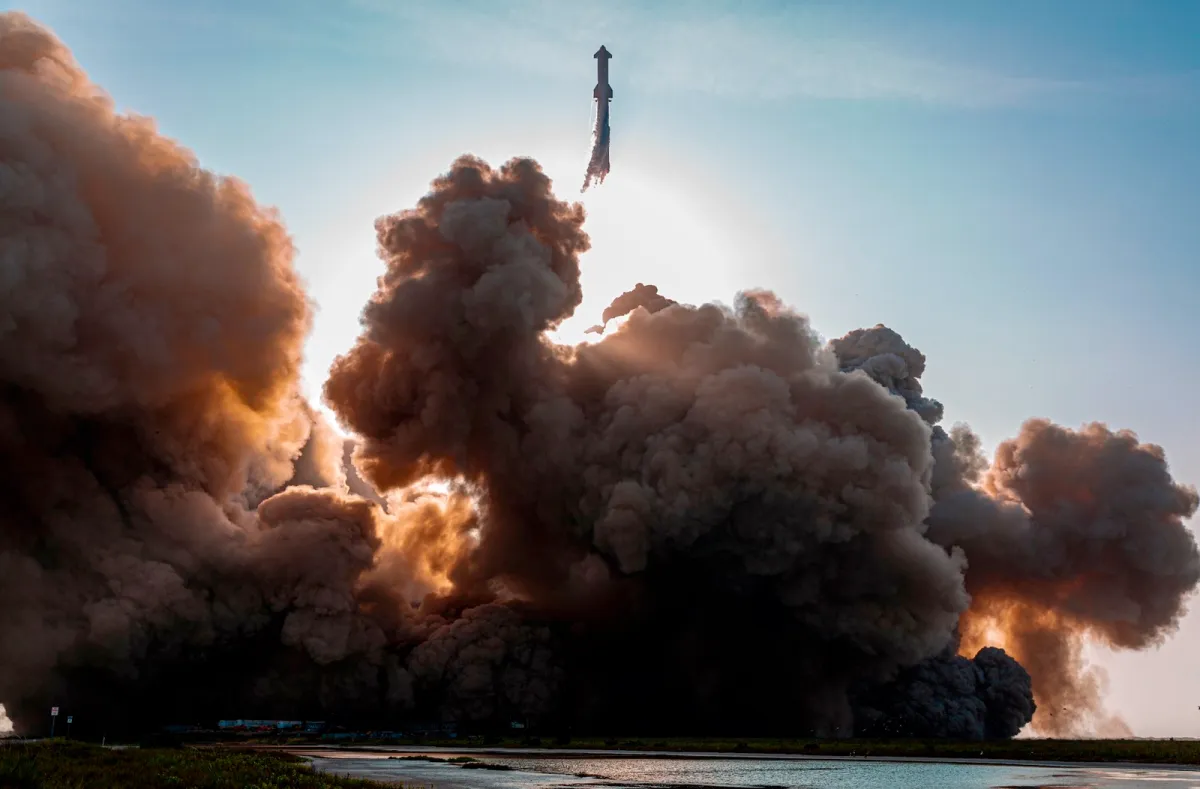FAA closes investigation into Starship crash
- September 8, 2023
- 0
The Federal Aviation Administration has completed its investigation into the accident that occurred during the first integrated launch of SpaceX Starship in April, but is not yet ready
The Federal Aviation Administration has completed its investigation into the accident that occurred during the first integrated launch of SpaceX Starship in April, but is not yet ready

The Federal Aviation Administration has completed its investigation into the accident that occurred during the first integrated launch of SpaceX Starship in April, but is not yet ready to approve the vehicle’s second launch.
The U.S. Federal Aviation Administration (FAA) said Sept. 8 that it had completed its investigation into the April 20 launch of Starship and its Super Heavy booster from the company’s Starbase test site in Boca Chica, Texas. The machine experienced multiple Raptor engine failures during takeoff, then crashed and was destroyed by the flight termination system four minutes after takeoff.
The FAA said the report would not be released because it contained classified and export-controlled information. The agency said the report found “several underlying causes” for the crash but did not identify any of them.
SpaceX said in a separate statement that a fuel leak in the rear of its Super Heavy launch vehicle caused fires, which cut off communications with the main onboard computer. “This resulted in loss of communication with most of the acceleration engines and ultimately loss of control of the vehicle,” the company said.
The FAA, which is overseeing the SpaceX-led investigation, said it identified 63 corrective actions that SpaceX must complete before its next launch.
“Corrective actions include upgrading the vehicle’s hardware to prevent leaks and fires, upgrading the launch pad to improve its reliability, incorporating additional controls into the design process, and additional analysis and testing of safety-critical systems and components, including the autonomous flight safety system. and implementation of additional change control methods,” the FAA said.
SpaceX said it added “leak mitigation” to the launch vehicle and improved testing, as well as adding a “significantly improved” fire suppression system in the launch vehicle’s engine compartment. The company said it also improved the reliability of its autonomous flight termination system, which worked longer than expected when it was introduced in April.
The conclusion of the investigation does not mean the FAA has approved another launch plan. “SpaceX must take all corrective actions affecting public safety and must apply for an FAA license modification that meets all safety, environmental and other relevant regulatory requirements prior to the next launch of Starship.”
In its letter to SpaceX informing the company that the investigation into the accident was closed, the FAA noted that Starship’s original launch license only covered one flight. SpaceX must apply for a license change for additional launches and show that it has taken corrective action as part of the process.
It’s unclear exactly how much progress SpaceX has made on these corrective actions. Along with the measures outlined in its statement, the company has taken steps to mitigate damage to the field by adding a water drainage system to prevent damage to the concrete field due to thrust from the engines in the super-heavy accelerator, as it did in April. lunch.
SpaceX CEO Elon Musk said in June that the company had made “more than a thousand” changes to the vehicle. This appears to include changes beyond what is necessary to respond to an accident, such as a switch to a “hot phase” approach in which the Starship’s upper stage ignites its engines before separating from the super-heavy booster. Improve the performance of the load.
SpaceX said in a statement that it had implemented “a full suite of system performance upgrades that are unrelated to any of the issues seen during initial flight testing,” such as the switch to hot stage architecture. Other changes include an electronic thrust vector control system for the Super Heavy’s Raptor engines, which is more reliable and energy efficient than the original hydraulic system.
SpaceX continues preparations for the second Starship/Super Heavy integrated flight. Starship rolled Ship 25 onto the pad on September 5 and placed it on Booster 9, which completed static fire testing on August 25.
“Starship is ready for launch pending FAA licensing approval,” Musk wrote. Neither SpaceX nor the FAA provided an estimate on how long it would take to obtain the license. Source
Source: Port Altele
As an experienced journalist and author, Mary has been reporting on the latest news and trends for over 5 years. With a passion for uncovering the stories behind the headlines, Mary has earned a reputation as a trusted voice in the world of journalism. Her writing style is insightful, engaging and thought-provoking, as she takes a deep dive into the most pressing issues of our time.